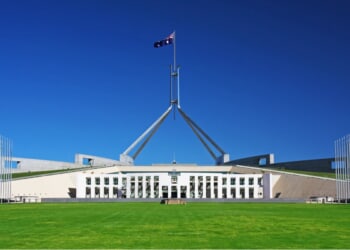The Trump administration made the right call in halting the Empire Wind offshore project off New York’s coast. For years, we’ve watched the renewable energy sector balloon into a subsidy-fueled juggernaut — touting “sustainability” while trampling the ecosystems it claims to protect. Empire Wind was the latest example of that hypocrisy. Thankfully, there’s now a pause.
The project is a textbook case of nature sacrificed in the name of climate theater. Construction noise from offshore turbines ruptures the acoustic world of whales and dolphins, disorienting entire migratory routes. Seabird collisions are a guaranteed cost — massive spinning blades in flyways are not benign. And the $5 billion price tag for power that costs $155 per megawatt-hour — nearly double the national average — makes a mockery of energy affordability. (RELATED: A Wrong Turn on the Road to ‘Green’ Energy)
Wind turbines haven’t just disrupted ecosystems — they’ve slaughtered raptors. At California’s Altamont Pass Wind Resource Area, an estimated 2,000 golden eagles have been killed over the years. Studies suggest 50 to 75 eagles die annually, year after year, due to poorly placed turbines along key migration corridors. And despite all the hand-waving about “mitigation,” the carnage continued. For all the green rhetoric, this industry has left a trail of feathers and bones behind it.
The irony? The same activists who warn that humanity is destroying the planet seem curiously uninterested in the seabird colonies disrupted by turbine construction — or in the whales dying along the Atlantic coast.
Wind turbines are estimated to kill between 140,000 and 679,000 birds annually in the United States.
Offshore wind infrastructure can displace marine species and disrupt migration patterns.
Let’s not forget the North Atlantic right whale — one of the most endangered mammals on Earth, with fewer than 350 left. The Empire Wind site cuts through its migratory corridor, increasing vessel traffic and underwater noise that disrupts breeding and feeding patterns.
Marine biologists have warned — repeatedly — about the consequences of underwater noise pollution on whale navigation, reproduction, and survival. These are not abstract harms. These are documented ecological disruptions waved through in the name of progress.
This isn’t innovation — it’s industrial sprawl dressed in green.
We’re bulldozing marine habitats, displacing wildlife, and calling it progress. When did environmentalism become an excuse to destroy the environment?
This isn’t about partisanship — it’s about accountability. Under the last administration, massive offshore wind projects were fast-tracked without adequate review. The environmental damage? Brushed aside. Whale strandings? A coincidence. Seabird displacement? Ignored. The green lobby decided offshore wind was the future, and that was that.
Nature doesn’t bend to slogans. Real environmentalism means asking hard questions before bulldozing ahead with massive industrial infrastructure, especially in delicate marine ecosystems. Pushing thousands of tons of steel into coastal waters, wiring miles of seabed, generating low-frequency noise day and night — none of that is “clean” just because there’s a turbine on top.
Now we have an Interior secretary who gets it. Doug Burgum, former governor of North Dakota, brings something rare to Washington: actual common sense. He knows how to develop energy responsibly —and he’s not faking it. I was in the crowd last summer in North Carolina when he spoke, unscripted, for 20 minutes straight about America’s energy matrix. It wasn’t political — it was informed, detailed, and surprisingly passionate. He understands the severity of our energy needs — not in theory, but in practice. He’s not playing games. And unlike the photo-op environmentalists clogging the Beltway, Burgum knows that conservation is a long game, not a campaign ad.
Under Burgum, the Department of the Interior is reviewing Biden-era offshore wind permits and pulling the emergency brake on projects that were rushed through. That’s not obstructionism. That’s stewardship.
If this is the green future, it looks a lot like old-school crony capitalism — just with slicker branding.
Offshore wind may have its place. But let’s be serious: it won’t power a continent-sized nation of 330 million. America needs a balanced energy portfolio — nuclear, hydro, natural gas, geothermal, and next-gen technologies. Relying on intermittent, low-yield sources like wind and solar as a primary energy strategy isn’t serious — it’s virtue signaling with a price tag.
And that price isn’t just economic. It’s ecological. When you start sacrificing migration corridors and coastal biodiversity to hit arbitrary climate deadlines, you’ve crossed the line from conservation to political ideology. It’s climate window dressing — destroying nature to save it, or so the sales pitch goes. That’s what Empire Wind represents. And that’s why shutting it down matters.
Environmental policy must be rooted in reality, not panic, not subsidies, and certainly not the whims of consultants chasing the next federal contract. Trump’s pause was a good start. Burgum’s leadership is the necessary follow-through.
Let’s not confuse haste with progress, or branding with stewardship. Nature deserves better.
READ MORE:
The Green Grift: How Power Forward Communities’ $2 Billion Boondoggle Misses the Mark


![NYC Tourist Helicopter Falls into Hudson River, Siemens Executive and Family Among Those Killed [WATCH]](https://www.right2024.com/wp-content/uploads/2025/04/NYC-Tourist-Helicopter-Falls-into-Hudson-River-Siemens-Executive-and-350x250.jpg)





![Biden Drops Racial Slur During First Public Speech Since Leaving Office [WATCH]](https://www.right2024.com/wp-content/uploads/2025/04/Biden-Drops-Racial-Slur-During-First-Public-Speech-Since-Leaving-350x250.jpg)

![Green Day’s Cringe Trump Diss Ends in Fire and Evacuation [WATCH]](https://www.right2024.com/wp-content/uploads/2025/04/Green-Days-Cringe-Trump-Diss-Ends-in-Fire-and-Evacuation-350x250.jpg)
![Red Sox Fan Makes the ‘Catch of the Day’ with Unconventional ‘Glove’ [WATCH]](https://www.right2024.com/wp-content/uploads/2025/04/Red-Sox-Fan-Makes-the-‘Catch-of-the-Day-with-350x250.jpg)





